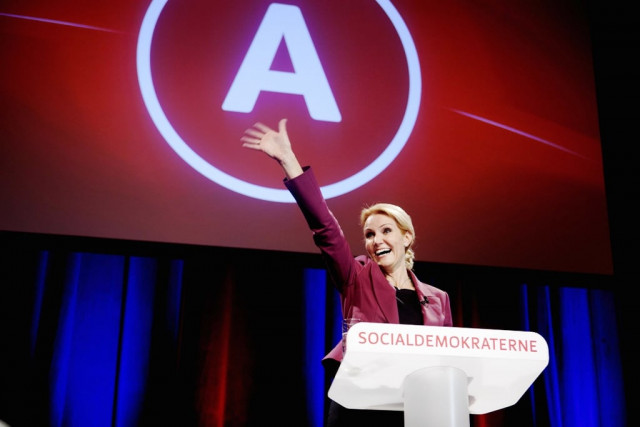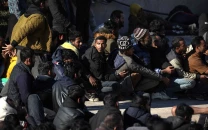Denmark set for first woman PM as left elected: Exit polls
Helle Thorning-Schmidt ousted Prime Minister Lars Loekke Rasmussen's centre-right government.

Voters had handed the left-leaning opposition led by Helle Thorning-Schmidt, an absolute majority in parliament, ousting Prime Minister Lars Loekke Rasmussen's centre-right government, according to the polls from public broadcaster DR and TV2 television.
Recent polls in the run-up to the election had consistently shown the 44-year-old Thorning-Schmidt, the daughter-in-law of British Labour politician Neil Kinnock, snatching victory.
She vowed during her campaign to shore up Denmark's welfare state and stimulate the slumping economy with spending, in contrast to the austerity measures proposed by Rasmussen, 47.
The TV2 poll handed Thorning-Schmidt's coalition 93 seats in the 179 seat parliament against 86 for the centre-right.
The DR poll, which did not include the four seats reserved for Denmark's autonomous territories Greenland and the Faroe Islands, meanwhile gave the opposition 90 seats against 85 seats for the centre-right.
The expected defeat of the coalition government, made up of Rasmussen's Liberal Party and the Conservative Party, will end the powerful influence wielded by the populist, anti-immigration Danish People's Party (DPP).
For 10 years, the DPP has pressured the coalition to adopt some of Europe's most draconian immigration and integration regulations, in exchange for its support on other issues in parliament.
Earlier, under a clear blue sky, Rukshana, a 50-year-old daycare worker, was among the throngs of Danes voting in the working-class Copenhagen neighbourhood of Valby.
"I'm voting for the red bloc (centre-left), because they are good for the Danish population. We have had enough of (DPP leader) Pia Kjaersgaard," said the Danish citizen of Pakistani origin, decrying how Denmark over the past decade has introduced some of the most draconian immigration laws in Europe.
While she touched on the once-heated immigration issue, the election campaign primarily focused on how to stir the country out of the slump caused by the global financial crisis.
The government "should have hit the brakes instead of just cruising along. Everyone could see that the economy was overheated," complained Per, a 71-year-old retired engineer, after casting his vote at a school in a wind-swept central Copenhagen late Thursday afternoon.
In 2007, when Denmark's economy was booming, the centre-right raked in 94 seats against 81 for the centre-left.
However, Thorning-Schmidt's Social Democratic Party cannot take much credit for the spectacular turn-around, as it on Thursday won the same 45 parliamentary seats as last time, according to the exit poll.
Instead, the expected centre-left victory can be attributed to the fact that she has managed the previously unthinkable task of drawing the far-left Red Greens and the centrist and market liberal Social Liberal Party into the same coalition, which also includes the centre-left Socialist People's Party.
The Red Greens more than doubled their 2007 result, landing 10 seats, while the Social Liberal Party added eight seats to their tally, landing at 17, according to the DR exit poll.
By 6:00 pm (1600 GMT), 72.6 percent of Denmark's some four million eligible voters had already cast their ballot, according to a Ritzau news agency survey, and total turnout is expected to be even higher than in 2007, when it ticked in at 86.5 percent.



















COMMENTS
Comments are moderated and generally will be posted if they are on-topic and not abusive.
For more information, please see our Comments FAQ